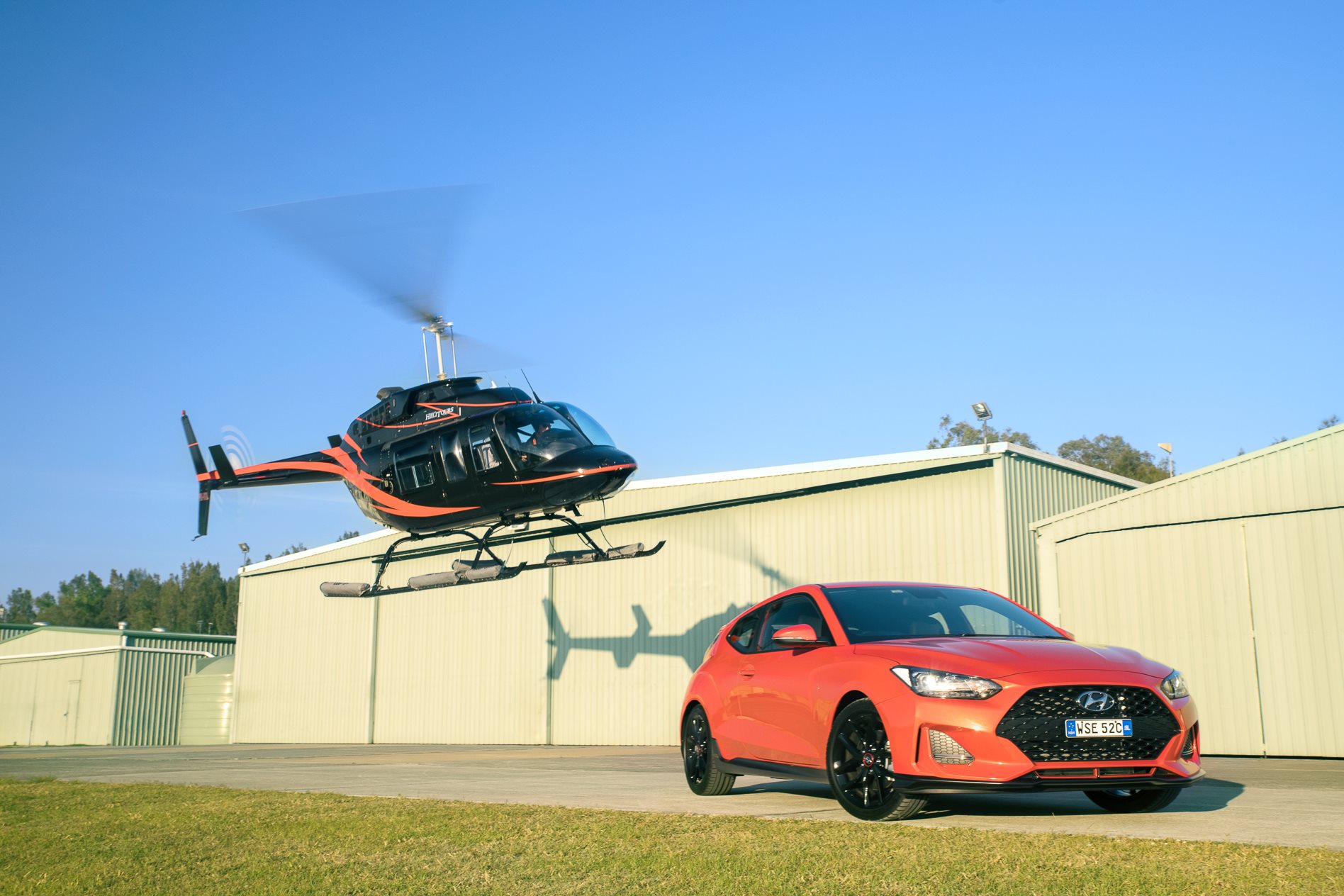
What is the Hyundai Veloster?
The most astonishing thing about the second-generation Veloster is that it was even built at all. There isn’t a single other market in the entire world for a right-oriented version of this quirky little car, which makes its existence even more unusual.
It’s not that swapping a steering wheel to the other side is difficult for a company that size of Hyundai, or that that Veloster doesn’t fit into the company’s current roster, either; it’s those doors.
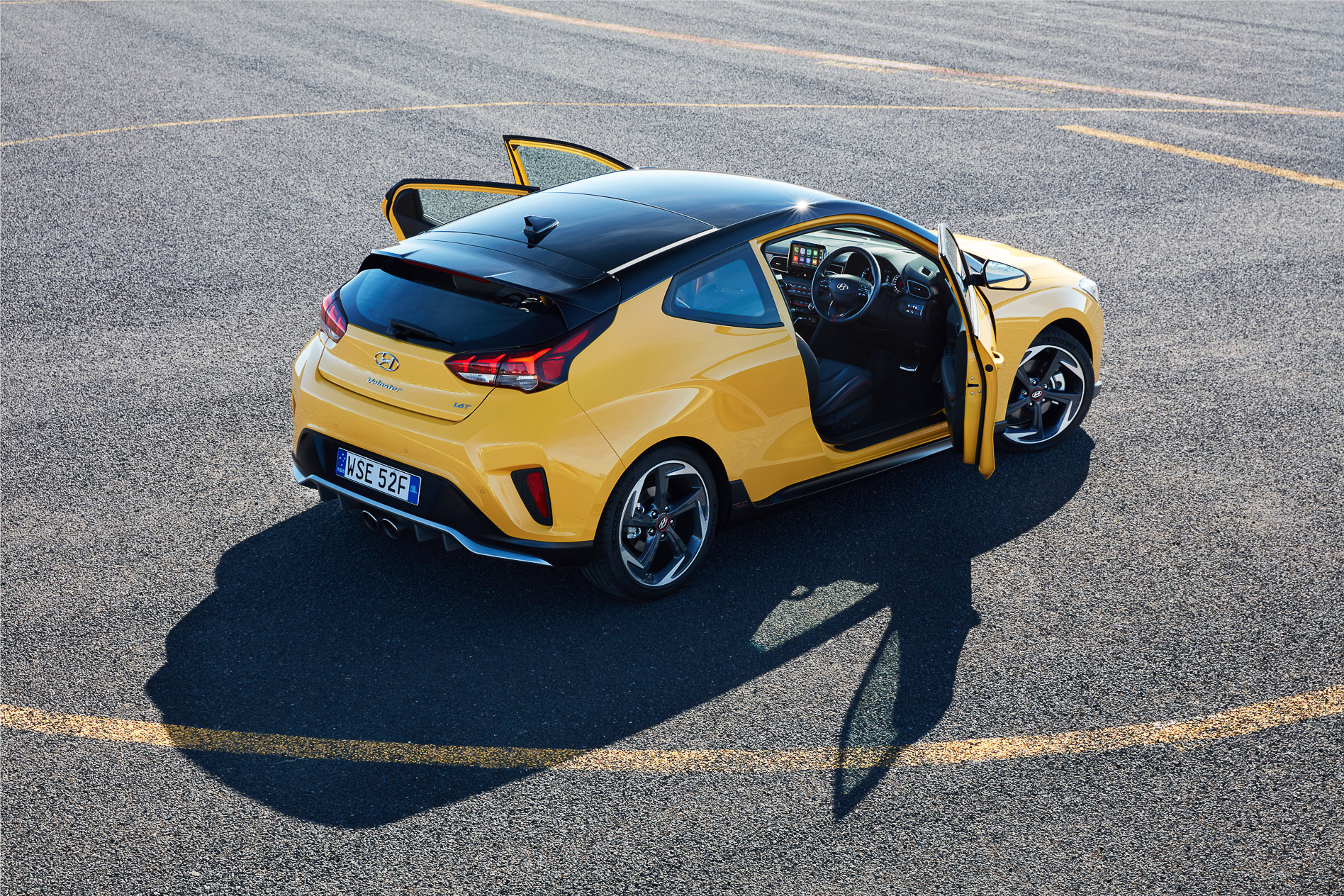
Revealed as Hyundai’s quasi-performance c-segment player in 2012, the Veloster joined only the Mini Clubman in offering non-mirroring doors on either side.
In the Veloster’s case, it looked after its occupants by running two doors on the left side and a single door for the driver, giving (supposedly) easier access to the rear bench.
That quirky design was complemented by equally unusual external elements, including a rear render that succeeded in looking both different and unfinished in equal measure.
It has moderate success, branded as ac sports car despite its, erm, lack of credentials in the space.
Some 19,000 Velosters were sold until the car faded from view last year, its performance KPI adopted by cars like the i30 N-Line nee SR.
Now, though, against the odds, it’s back, adopting the same DNA of daring to be different but for a new age.
What is the Hyundai Veloster like to drive?
Based on the same underpinnings as the i30 hatchback family, the Veloster gets a leg-up in a couple of areas. Its multi-link independent rear suspension arrangement gives it a leg up in the ride quality, handling prowess and tunability stakes, while the fact that the entire car is, on average, 100kg lighter than the equivalent i30 also bodes well for its overall abilities.
Once again, Hyundai’s suspension skunkworks team has waved its shock dynos and vernier calipers over the car – but in the case of the Veloster, the job was already half-done, thanks to the common i30 platform, which allowed the team to get to the good stuff right out of the box.
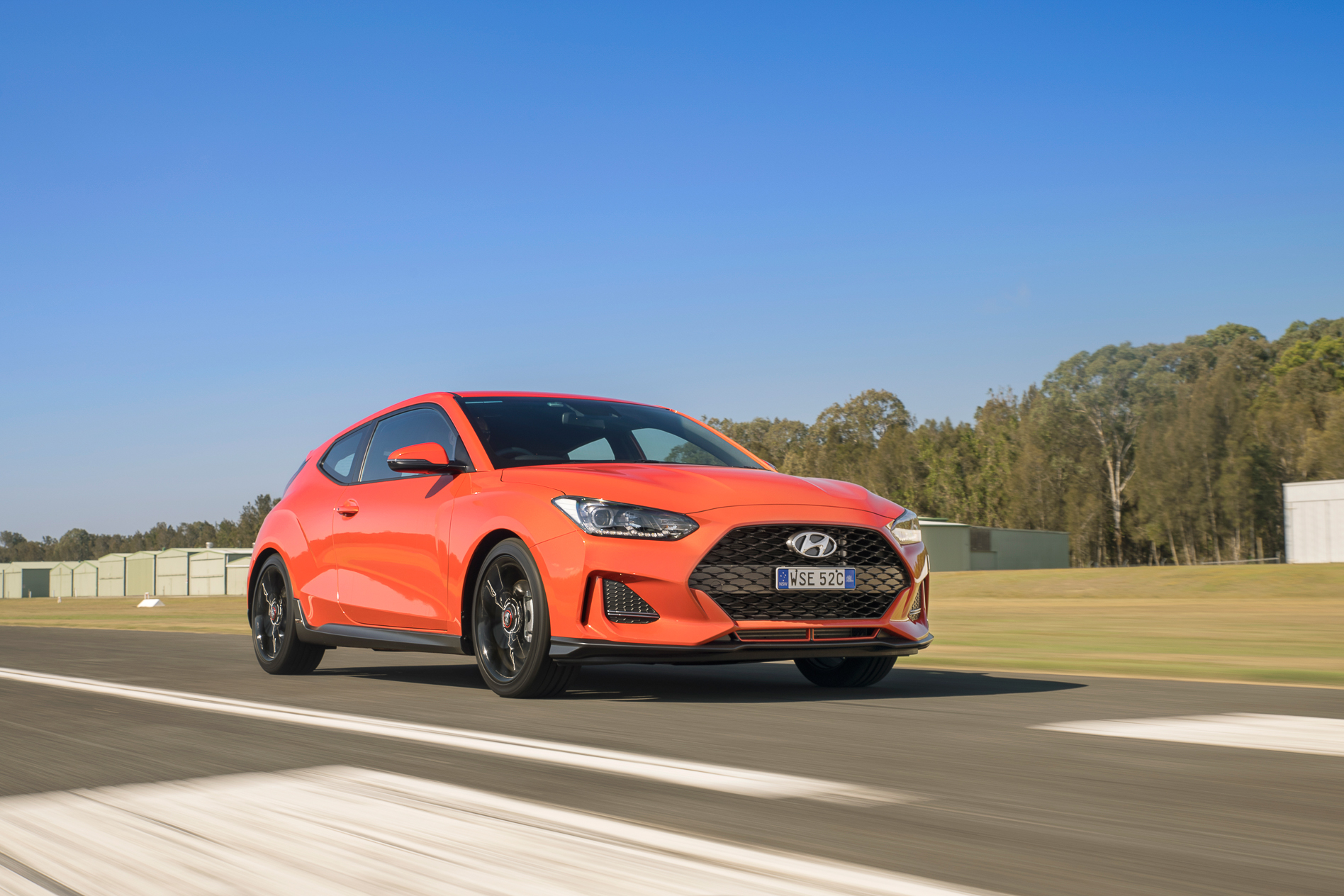
Tuned with an eye towards a sporty demeanour, the Veloster – which comes in both 2.0-litre naturally aspirated petrol and 1.6-litre turbocharged petrol guises – is a keen, engaging tool to punt on a winding country road. It turns into a bend with alacrity and vim, with a surprising amount of front-end grip on offer.
The compliant rear end, meanwhile, does its part by keeping the Veloster well settled and gripped up, while the body and chassis itself – 28 percent stiffer in twist, according to the Hyundai boffins – means that the well-fettled suspension can actually do its work.
Big tick, too, for the standard Michelin Pilot Sport tyres, which tie the whole shooting match together beautifully – though be aware they won’t be especially cheap to replace when the time comes.
The 110kw, 180Nm 2.0-litre petrol engine is linear and useful, if not especially inspiring, and the gearing in both the six-speed manual or dual-clutch auto transmission sets feels abnormally long; great for fuel economy but not that sporty under the pump.
The spritely 150kW, 265Nm 1.6-litre turbocharged unit is a gem we’ve come across in many other Hyundais, and it spins up freely and punches on with enthusiasm. Its damp squib, though, is its soundtrack – it’s just not that nice inside the car or from the outside. Kudos for the return of the centrally-mounted twin exhausts, though.
That sporty suspension translates to a ride quality around town that is firm but not brittle, with the Veloster’s stiff base allowing the suspension to do its work to soak up the worst of our urban jungle without falling in a heap.
What’s the Hyundai Veloster like to live with?
It’s not a coupe and it’s not a hatch, and as a result, the Veloster picks up both good and bad traits from both.
Up front, there’s next to no difference between sitting in the Veloster as an i30. The floating multimedia screen, twin-tube dash, simple button arrangement… it’s straight from the i30 playbook.
The Veloster, though, misses out on some of the finer fit and finish items of the i30. There’s a lot more rigid plastic in key areas like the tops of the doors, for example, while even the auto models come with a manual handbrake.
The seats – cloth on the entry-level Veloster, cloth/leather on the second-tier Turbo, and leather on the top-rung Turbo Premium – up front are comfortable and decently size, but it’s a different story out back.
Down the left side of the car are two doors, compared to the right side’s one. Hyundai says it’s increased the rear door aperture (below) when compared to the last one… but it’s a bloody tight fit for an adult, let alone a 187cm-sized one. Headroom has been improved, but it’s not sufficient for even moderately tall people, and there’s not a lot of room behind the front seats.
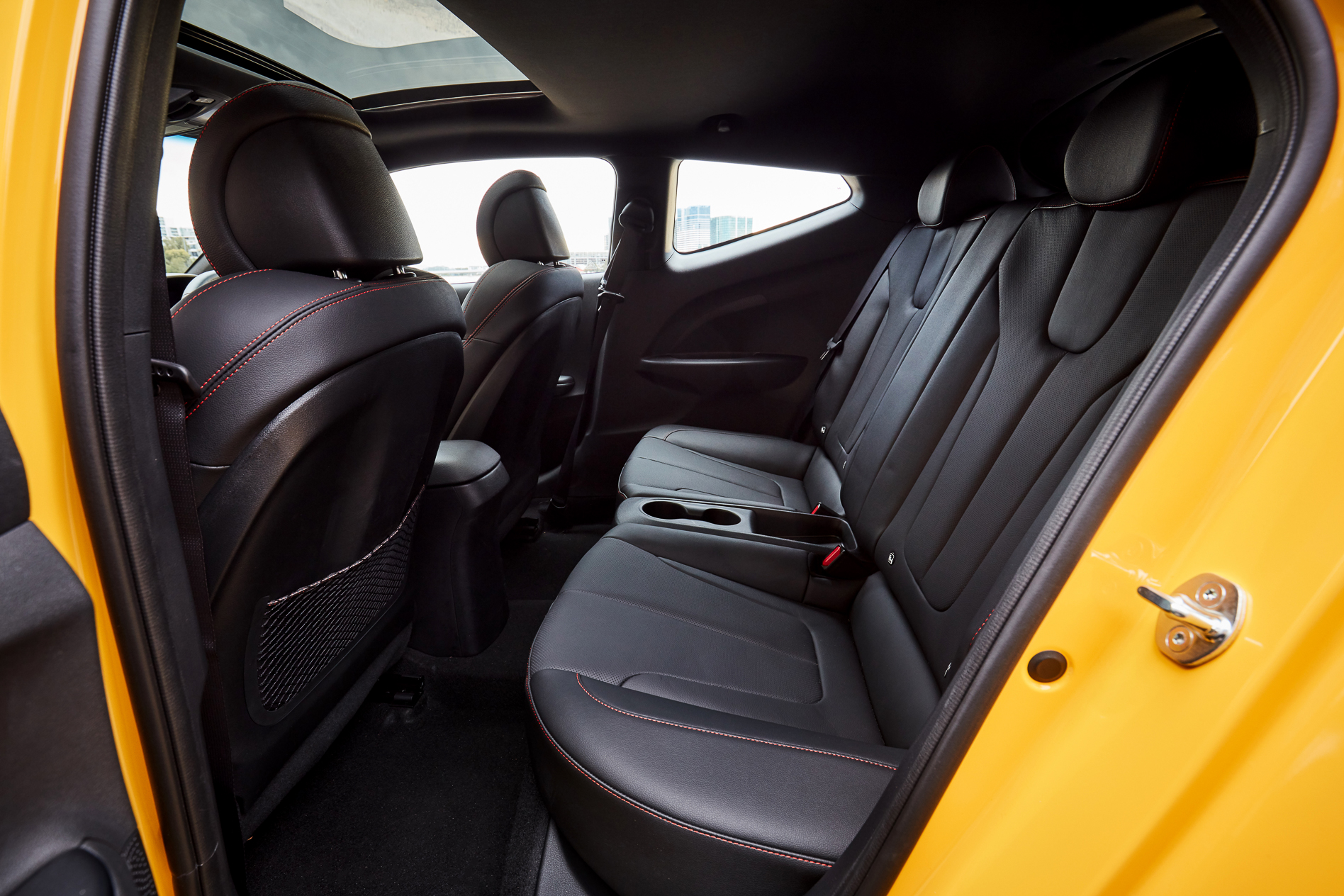
As well, the curvature of the roof over the rear door opening makes access quite difficult.
How small is the rear seat in the Hyundai Veloster? I pulled a favour from a friend to snag the front passenger seat in his Veloster for an hour-long commute, rather than do the same amount of time in the rear seat of another Veloster.
The novel design also impacts on luggage space, with just 303 litres of awkwardly proportioned room for cargo available with the seats up.
Hyundai argues that the Veloster is aimed at families looking to supplement an SUV, or a couple sans kids. I can imagine youngish kids digging the back seat, but strapping in under-7s into a baby seat would get old really quickly, given the necessary stoop needed to get into that rear door.
In terms of kit, all Velosters come with AEB and lane-keep assist, while blind-spot collision warning, high-beam assist, rear cross-traffic alert, forward collision-avoidance assist with camera and radar (auto only), and adaptive cruise control (auto only) come on the Turbo variants.
The base Veloster gets 18-inch alloy wheels and Michelin Pilot Sport 3 tyres, automatic headlights, LED daytime running lights, cloth seats and a 7.0-inch touchscreen display with Apple CarPlay/Android Auto.
The Turbo gets LED headlights and taillights, Pilot Sport 4 tyres, alloy pedals, cloth/leather-appointed seats, digital performance gauges within the 8.0-inch multimedia screen, paddle shifters for the auto, keyless entry and start, DAB+ digital radio and satellite navigation.
Is the Hyundai Veloster worth the money?
The Veloster kicks off at a nick under $30,000 before on-roads for a manual gearbox-equipped 2.0-litre version and tops out at just under $42,000 for the full-fat Turbo Premium with a six-speed auto.
Our pick, though, is the mid-grade Turbo auto (below). At $38,990, it gets you the best engine in the range and all of the available active safety gear available on the Veloster.
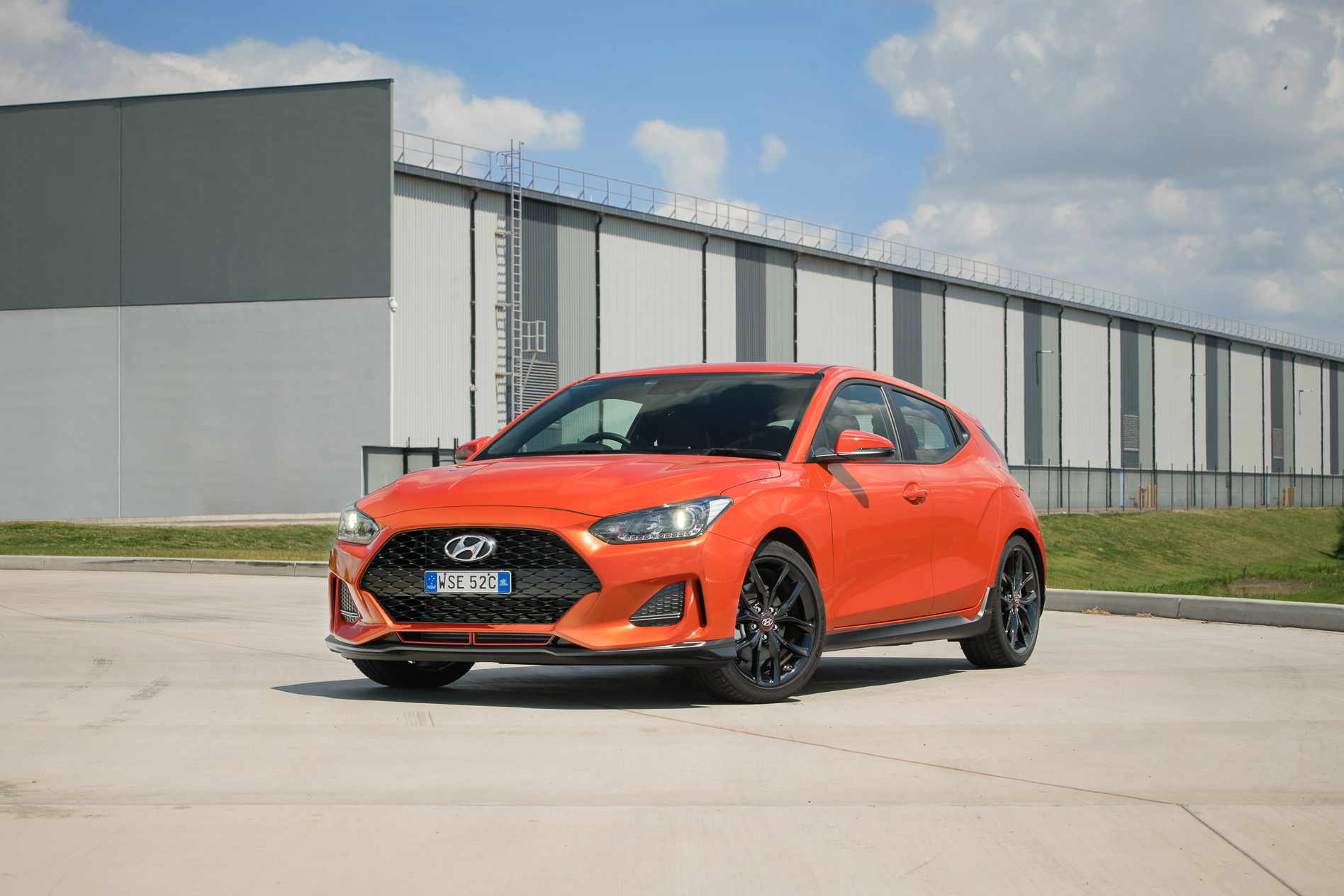
We’d be remiss, though, not to point out that it would only take a few more thousand dollars to get into the equally quirky but much, much more accomplished i30N Fastback (albeit in manual only).
Other rivals in the space – if you’re looking strictly at the Veloster’s like-for-like rivals in the sports car category – include the Toyota 86 and Subaru BRZ twins and Holden’s three-door Astra hatch.
Verdict
For me, it feels like the game has moved on apace since the original Veloster dropped in 2012. A greater array of cute-yet-practical compact crossovers are taking care of the desire for something unusual, while Hyundai’s own excellent i30 has moved up in equipment and premium feel terms over the same period.
Still, the Veloster is a handsome, unusual jigger that will absolutely appeal to a sub-set of buyers who know what they like when they see it. Hyundai’s five-year warranty and a pretty impeccable reputation for reliability don’t hurt, either.



